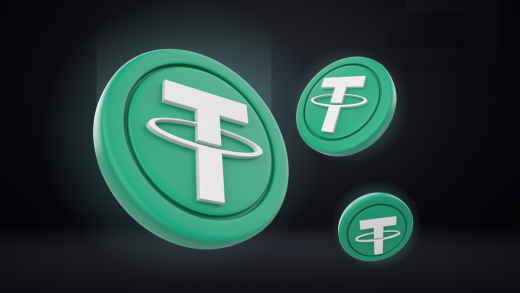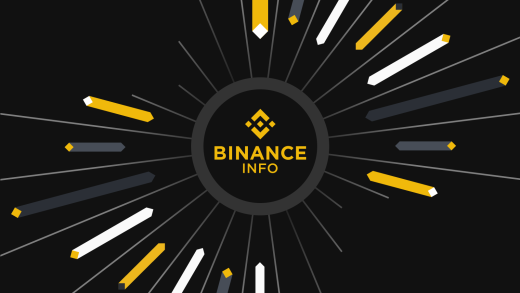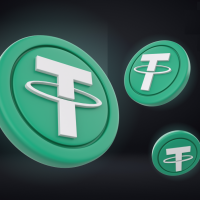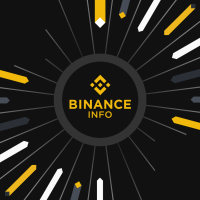Ethereum (ETH) has emerged as one of the most important innovations in the world of blockchain and cryptocurrency since its launch in 2015. Created by Vitalik Buterin and other developers, Ethereum is more than just a cryptocurrency; it is a decentralized platform that enables developers to build and deploy smart contracts and decentralized applications (dApps).
With its native cryptocurrency, Ether (ETH), Ethereum has revolutionized the world of finance, technology, and even art through its role in Decentralized Finance (DeFi) and Non-Fungible Tokens (NFTs). This article delves into Ethereum, its technology, how it operates, platforms that support it, how ETH can be exchanged, and the future of the Ethereum project.
What is Ethereum (ETH)?
Ethereum is an open-source, decentralized platform built on blockchain technology that allows developers to create and execute smart contracts—self-executing contracts with the terms of the agreement directly written into code. Unlike Bitcoin, which focuses primarily on being a store of value and medium of exchange, Ethereum was designed to serve as a “world computer” where decentralized applications (dApps) could run without any downtime, fraud, or interference from third parties.
The native cryptocurrency of the Ethereum network is Ether (ETH), which is used to pay for transaction fees, known as gas fees, and as a means of exchange within the Ethereum ecosystem.
How Ethereum Works
Ethereum operates on a blockchain similar to Bitcoin but with significant enhancements. Here’s a breakdown of how it works:
- Smart Contracts: Ethereum’s main innovation is the ability to deploy smart contracts, which are pieces of code that automatically execute when predefined conditions are met. These contracts run exactly as programmed and are immutable once deployed, ensuring trust between parties without the need for intermediaries.
- Ethereum Virtual Machine (EVM): The Ethereum network uses a unique feature called the Ethereum Virtual Machine (EVM), which allows developers to create decentralized applications that are compatible across the entire Ethereum network. The EVM executes smart contracts and ensures that dApps behave as intended.
- Gas Fees: To execute any transaction or smart contract on the Ethereum network, users must pay a fee in Ether called gas. The gas fee is used to compensate miners for the computational power they use to validate and secure transactions.
- Consensus Mechanism: Ethereum initially used a Proof of Work (PoW) consensus mechanism, similar to Bitcoin, to validate transactions and secure the network. However, Ethereum is in the process of transitioning to a Proof of Stake (PoS) mechanism, which is more energy-efficient and scalable. This transition is part of Ethereum’s broader upgrade, known as Ethereum 2.0 or The Merge.
Key Features of Ethereum
- Decentralization: Like Bitcoin, Ethereum is decentralized, meaning no central authority controls the network. All transactions and smart contracts are processed and verified by a global network of nodes.
- Programmability: Ethereum allows developers to create and deploy decentralized applications (dApps) on its platform, covering everything from decentralized finance (DeFi) to gaming and social networks.
- Immutability: Once data is written to the Ethereum blockchain, it cannot be altered or tampered with, providing transparency and security.
- Interoperability: The Ethereum ecosystem is designed to work with other blockchain networks and applications, making it highly adaptable for different use cases.
- Ethereum 2.0: Ethereum’s transition from Proof of Work (PoW) to Proof of Stake (PoS) with Ethereum 2.0 aims to improve the network’s scalability, security, and sustainability, addressing previous issues such as high gas fees and network congestion.
Use Cases of Ethereum
- Decentralized Finance (DeFi): Ethereum is the backbone of the DeFi movement, where traditional financial services like lending, borrowing, and trading are replicated in a decentralized manner without intermediaries. Some popular DeFi protocols include Uniswap, Aave, and Compound.
- Non-Fungible Tokens (NFTs): NFTs, unique digital assets that represent ownership of digital or physical items, have gained immense popularity on the Ethereum network. NFTs have revolutionized art, music, gaming, and collectibles, with platforms like OpenSea and Rarible driving the NFT economy.
- Decentralized Applications (dApps): Ethereum has enabled developers to build dApps that run autonomously on the blockchain. Popular dApps include CryptoKitties, Axie Infinity, and various social media and marketplace platforms.
- Initial Coin Offerings (ICOs): Ethereum was instrumental in the ICO boom, where projects raised capital by issuing their tokens on the Ethereum blockchain. While the ICO craze has died down, Ethereum is still a popular platform for tokenization and fundraising.
- Enterprise Use Cases: Large enterprises are also exploring Ethereum for various use cases such as supply chain management, identity verification, and data security. For example, Microsoft and J.P. Morgan have built private blockchain solutions on Ethereum.
Platforms that Support Ethereum
Ethereum is supported across numerous platforms, including cryptocurrency exchanges, wallets, and other financial services. Some of the most prominent platforms are:
- Coinbase: One of the most popular cryptocurrency exchanges, Coinbase allows users to buy, sell, and hold Ethereum.
- Binance: Binance offers extensive trading pairs for ETH and provides advanced trading features for experienced users.
- Kraken: Kraken is a well-known exchange that supports ETH and offers staking services where users can earn rewards by participating in the Ethereum 2.0 Proof of Stake system.
- Gemini: Gemini is a secure and regulated exchange that allows users to trade and store Ethereum.
- MetaMask: MetaMask is a popular Ethereum wallet that can be used to interact with the Ethereum blockchain, allowing users to store ETH and interact with dApps.
- Ledger & Trezor: These hardware wallets provide cold storage solutions for Ethereum, keeping your private keys offline and secure.
- PayPal: Ethereum is also supported on PayPal, allowing users to buy, sell, and hold ETH directly through their PayPal accounts.
Sending and Receiving Ethereum
Sending and receiving Ethereum is a straightforward process that can be done using a digital wallet. Here’s how it works:
- Create a Wallet: To store and send Ethereum, users need an Ethereum wallet. Wallets like MetaMask, Trust Wallet, and Ledger are commonly used for this purpose.
- Public Address: Every wallet has a public Ethereum address, which is a long string of alphanumeric characters. This address is shared with others to receive ETH.
- Gas Fees: Every transaction on the Ethereum network requires a gas fee. Gas fees fluctuate based on network congestion and the complexity of the transaction.
- Sending ETH: To send ETH, the user enters the recipient’s wallet address, the amount to be sent, and pays the gas fee. The transaction is then processed by the network.
- Transaction Confirmation: Once the transaction is broadcast to the Ethereum network, it must be validated by miners or stakers (depending on PoW or PoS). Transactions typically take a few seconds to minutes to confirm.
Ethereum Trading Pairs
Ethereum can be traded against a wide variety of cryptocurrencies and fiat currencies. Some of the most common trading pairs include:
- ETH/USD: Trading Ethereum against the US dollar is one of the most common pairs.
- ETH/BTC: Ethereum is frequently traded against Bitcoin, providing opportunities for users to diversify between the two leading cryptocurrencies.
- ETH/EUR: Ethereum is also traded against the euro, popular among European traders.
- ETH/USDT: Tether (USDT) is often used as a stablecoin to trade with Ethereum, especially in highly volatile markets.
- ETH/BNB: Binance Coin (BNB) is often traded against Ethereum on Binance’s exchange, providing liquidity and opportunities for traders.
The Ethereum Project and Future Outlook
Ethereum’s vision of a decentralized world computer has already transformed industries, and its future looks even brighter. The Ethereum 2.0 upgrade, which focuses on scalability, security, and sustainability, is expected to be fully deployed in the coming years. With Ethereum 2.0, the network will shift to a Proof of Stake (PoS) consensus mechanism, drastically reducing energy consumption and improving the speed and efficiency of transactions.
The Layer 2 solutions being developed on Ethereum, such as Optimism and Arbitrum, aim to reduce gas fees and increase transaction throughput by processing transactions off-chain before settling them on the Ethereum main chain.
Additionally, Ethereum continues to be the primary platform for DeFi and NFTs, sectors that are expected to see exponential growth in the coming years. As institutional interest in Ethereum grows and more developers build on the network, Ethereum’s potential as the backbone of decentralized finance and internet infrastructure is becoming clearer.
On The End
Ethereum’s innovation in blockchain technology extends beyond just being a cryptocurrency. It is a platform for developers, innovators, and businesses to build the future of decentralized finance, digital ownership, and autonomous applications. With the upcoming Ethereum 2.0 upgrade and the rise of DeFi and NFTs, Ethereum’s potential is limitless.
For anyone looking to invest in, develop on, or use blockchain technology, Ethereum is undoubtedly one of the most















1 Response
[…] All information about Ethereum (ETH) […]